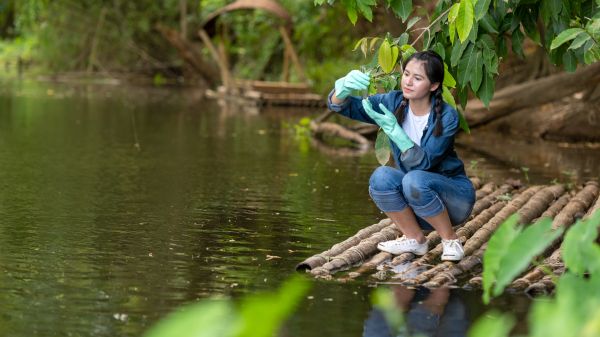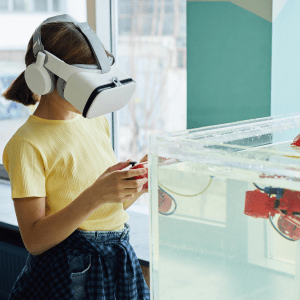E-STEM

It’s no secret that good environmental education is interdisciplinary, hands-on, and relates to the real world. Perhaps less known, these characteristics also describe the key drivers of STEM-learning (science, technology, engineering, and math), and new research has shown a lack of understanding among youth in the United States today. Working to fill that gap, environmental education has the opportunity to create a pathway for implementing effective and engaging STEM-lessons both in and outside of the classroom.
I have seen this program grow from a small group of scientists to a global database connecting scientists and classrooms, and now even families! Instructors can request almost any topic and find a scientist to join their classroom for an hour-long conversation directly with participants. This is the easiest way (just a simple form!) to interact with a scientist who is willing to explain complex topics at any level, from kindergarten to adult education, and answer questions about their personal journey as a scientist and their research topics. Skype a Scientist is a unique and memorable experience that helps students to see diverse representation in STEM and learn about cutting edge science from the researchers themselves.
Guidelines: Depth, Fairness and accuracy
Whether you are an educator, a parent, or simply want to know more about environmental education, the Greening STEM Hub offers a collection of tools and resources that support using the environment as context for learning. Visitors can find case studies illustrating the various components of Greening STEM, download the Greening STEM Idea Journal for Educators or skim through a curated collection of Next Generation Science Standards aligned curriculum, lessons, and activities. Greening STEM aligns with all six key characteristics of high-quality EE materials outlined in Environmental Education Materials: Guidelines for Excellence.
Guidelines: Action orientation, Depth, Emphasis on skills building, Fairness and accuracy, Instructional soundness, Usability
People are naturally visual, so it makes sense that in the Age of Information, often the ideas that stick are those with some sort of image attached to them. The same can be said when we think of data-visualization. David McCandless’s book features hundreds of examples of infographics that can serve to inspire, inform, and help relate to the world around us through data. I use this resource as a teaching tool for students to help them create their own scientific stories about the environment and communicate with others.
Guidelines: Depth, Usability
When I need ideas or inspiration to learn more about a topic or create a lesson, often I find myself searching ed.ted.com/lessons and am met with high-quality, short, subject-matter videos that provide me with lesson ideas, discussion prompts, and even additional resources that I can run with. Created by educators, for educators, the more than 300K lessons developed to date leave you bound to find a perfect extension to your specific nature-based pre or post-lesson.
Guidelines: Emphasis on skills building, Instructional soundness, Usability
In my humble opinion, there is no better artifact than Richard Louv’s The Nature Principle to document our present chapter in time as a society faced with balancing the “virtual and the real.” Where his other titles focus on ideas like nature-deficit disorder (Last Child in the Woods) or health implications of spending more time outside (Vitamin N), the Nature Principle covers topics like the “hybrid mind” and offers inspiration for creating high-tech, high-nature neighborhoods where we live and work.
Guidelines: Action orientation, Depth, Fairness and accuracy







